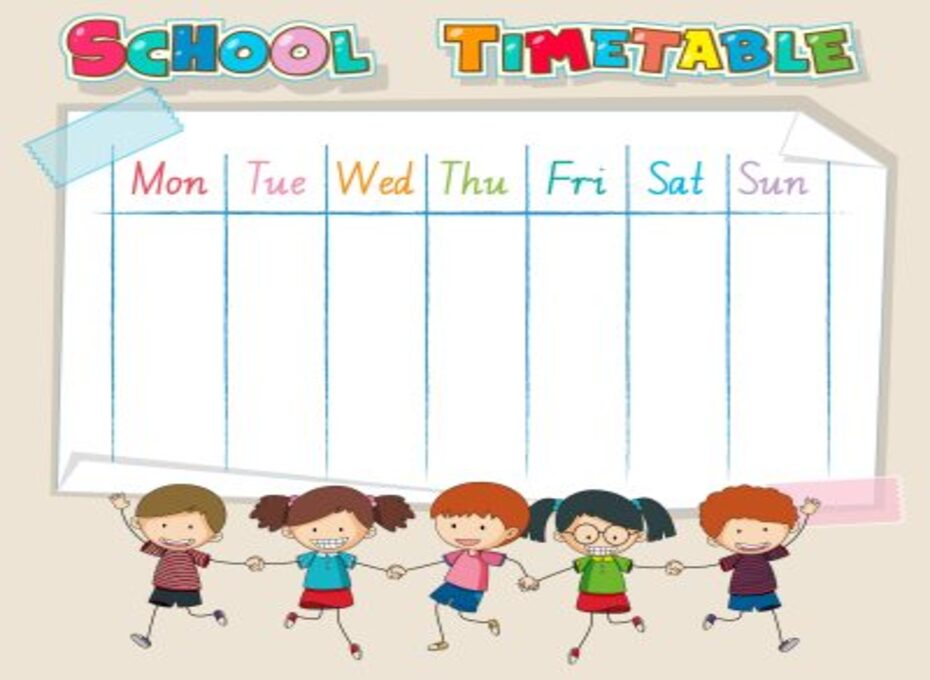How many weeks in the school year in the United States can vary depending on the state and school district. Generally, the school year begins in late August or early September and ends in late May or early June. The exact length of the school year can range from 180 to 220 days, with the average being around 180 days.
One of the most well-known school calendars is the 180-day calendar, followed by many states and school districts across the country. This calendar consists of 36 weeks of instruction, containing five days of classes each week. This calendar is often used in urban areas and is intended to provide students with a consistent and structured learning environment.
Another popular calendar is the 186-day one, typically used in rural areas. This calendar consists of 37 weeks of instruction, containing five days of classes each week. The additional six days are used for professional development, parent-teacher conferences, and other activities.
The 200-day calendar is also used in certain states; this calendar consists of 40 weeks of instruction, with each week containing five days of classes, with additional days for professional development and other activities. This calendar is often used in states with high student-to-teacher ratios, as it allows for more instruction time and opportunities for individualized learning.
Effect of Time Zone on How Many Weeks in the School Year
The school year schedule also varies based on the time zones in which the schools are located. The five famous time zones in the United States are Eastern Time (ET), Central Time (CT), Mountain Time (MT), Pacific Time (PT), and Alaska Time (AKT). The school year schedules in these time zones can differ based on the state and school district.
For example, schools in the Eastern Time zone, which includes states such as New York, Pennsylvania, and Florida, may have a start time of around 8:00 am and an end time of around 2:30 pm. Schools in the Central Time zone, which includes states such as Texas, Illinois, and Missouri, may have a start time of around 7:00 am and an end time of around 2:00 pm. Schools in the Mountain Time zone, which includes states such as Colorado, Montana, and Utah, may have a start time of around 8:00 am and an end time of around 3:00 pm. Schools in the Pacific Time zone, which includes states such as California, Oregon, and Washington, may have a start time of around 8:30 am and an end time of around 3:30 pm. Schools in the Alaska Time zone, which includes the state of Alaska, may have a start time of around 7:00 am and an end time of around 2:00 pm.
Managing a classroom efficiently for students
Setting clear expectations, maintaining discipline, and creating a positive learning environment. Here are a few tips for effectively managing a classroom for students:
- Be prepared: Come to class with all the materials you need, including your homework, notebook, and pen or pencil. Being prepared can help you stay focused and on task.
- Follow the rules and expectations: Be aware of the practices and expectations set by your teacher, and follow them consistently. This can include being on time, staying on task, and respecting others.
- Take responsibility for your learning: Take an active role in your knowledge. Ask questions when you don’t understand something, and take the initiative to seek extra help.
- Be respectful: Show respect to your teacher and classmates by paying attention, being polite, and refraining from interrupting or talking out of turn.
- Stay organized: Keep your work area and materials organized to help you stay on task and reduce distractions.
- Take breaks: If you are tired or losing focus, take a short break. Stand up, stretch, or take a quick walk around the room.
- Use positive reinforcement: Encourage positive behavior by praising yourself for staying on task, building routines, completing work on time, or getting good grades.
By following these tips, you can help create a well-managed classroom that fosters a positive learning environment and allows you to s. Remember that managing a classroom is an ongoing process that requires flexibility, patience, and persistence.

